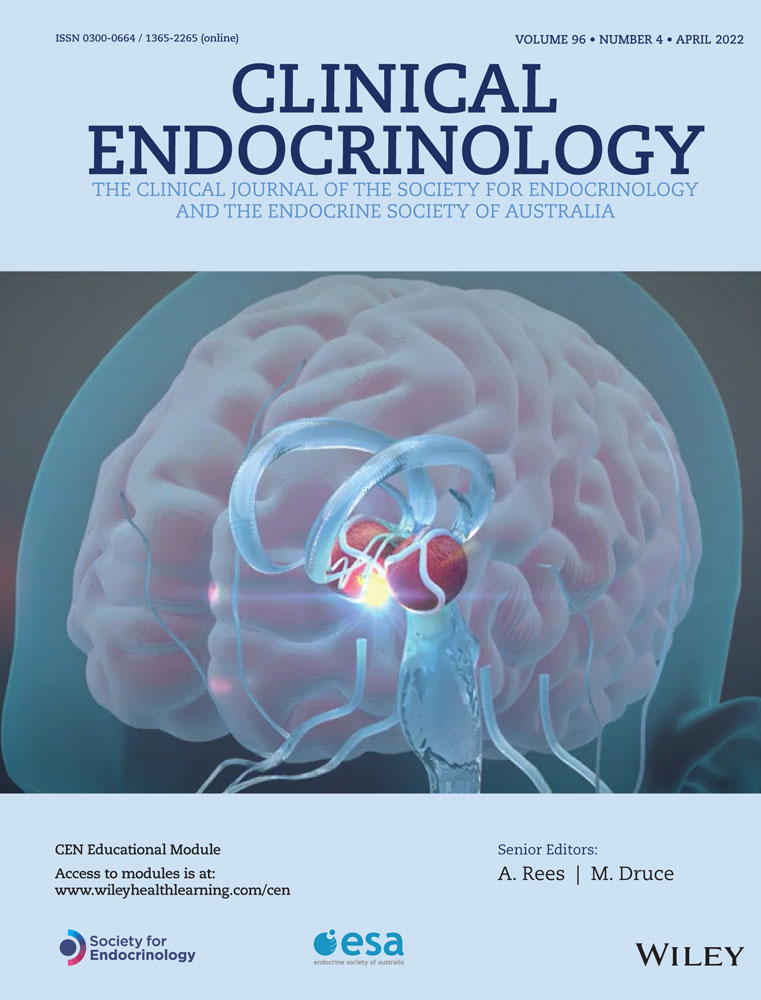Contrast-enhanced 3D-T2-weighted SPACE sequence for MRI detection and localization of adrenocorticotropin (ACTH)-secreting pituitary microadenomas
Yue Wu and Yixin Cai are considered joint first author.
Zhenwei Yao and Zengyi Ma are considered joint senior author.
Abstract
Objective
Cushing disease is a potentially fatal endocrine disorder caused by adrenocorticotropin (ACTH)-secreting microadenomas in the pituitary gland. Accurate detection and localization of the adenomas is the key to clinical treatment. This study analysed the value of contrast-enhanced Sampling Perfection with Application-optimized Contrasts using different flip angle Evolutions (SPACE) sequence in magnetic resonance imaging (MRI) assessment of ACTH-secreting pituitary microadenomas.
Design and Patients
We carried out a retrospective study in which 45 patients with ACTH-secreting pituitary microadenomas were enrolled. Dynamic contrast-enhanced (DCE) coronal T1-SE sequence was performed. A contrast-enhanced coronal SPACE sequence was added immediately after DCE MRI finished. Two independent observers assessed the tumour existence and location, then the results were compared with surgical findings.
Results
Twenty-four lesions (53.3%) were detected by the DCE T1-SE sequence alone, while 35 lesions (80.0%) were detected with the addition of contrast-enhanced SPACE sequence. The sensitivity (58.5% vs. 85.3%; p < .05) and best diagnostic accuracy (62.0% vs. 84.4%; p < .05) were significantly better for addition with SPACE sequence than DCE-SE images alone in detection of ACTH-secreting pituitary microadenomas. For lesions <5 mm, the detected numbers were 4 (16.6%) versus 10 (27.8%) by DCE T1-SE sequence and combined DCE T1-SE with SPACE sequence.
Conclusions
A combination of contrast-enhanced SPACE with DCE T1-SE sequence could improve the detection of ACTH-secreting pituitary microadenomas. Contrast-enhanced SPACE sequence could be a supplementary sequence for imaging of ACTH-secreting pituitary adenomas when T1-SE sequence provides negative or equivocal findings.
CONFLICT OF INTERESTS
The authors declare that there are no conflict of interests.
Open Research
DATA AVAILABILITY STATEMENT
The data that support the findings of this study are available from the corresponding author upon reasonable request.




